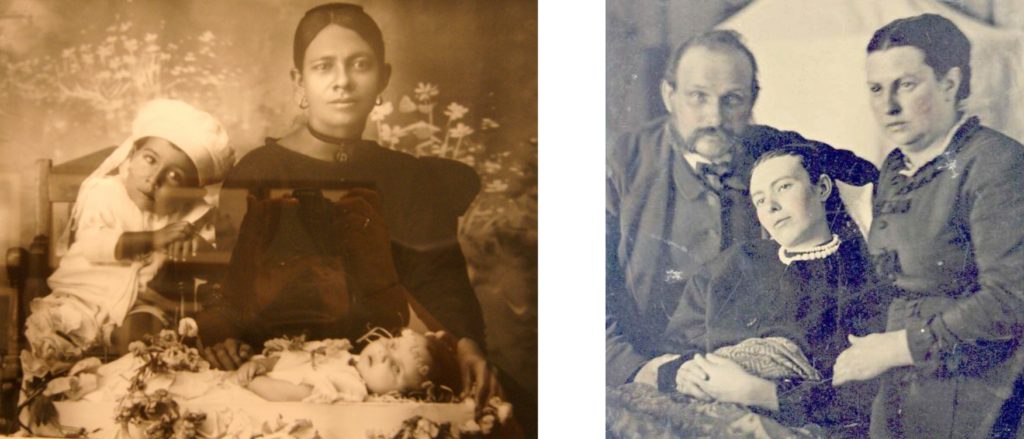UNITED STATES—Horror movies are good at many things, such as making you forget the realities of life and leaving behind the bitter thought of THINGS COULD BE WORSE.
The art of horror has evolved, cinematography aside. Since movies have only been around since the 19th century, I won’t try to reason how the finding of illumination-animation prehistoric cave art could be construed as a movie…
Many websites list the first horror movie as The Devil’s Castle in 1896, but then others say it was this dancing skeleton film from 1895. They were referred to as SPOOK TALES until the term horror caught on in the 1930s.
I would like to interject that for some, life was like a horror movie in the 19th century! A culture that included posing with dead bodies, cleaning outhouses full of crap-loving insects, or killing and skinning your own meat for meals, EVERY DAY.

The horror genre has evolved along with our reality-driven fears, in essence, exploiting them. Perhaps back then when death by natural causes was common, fantasizing about monsters was the best way out of reality?
Monster movies dominated, as we already know.
Like White Zombie (1932), based on a book by author William Seabrook, who was largely influenced after witnessing cannibalism in Africa and claims to have tried human meat for himself.
It seems to me that horror movies changed from MONSTERS we had no control over, originally born from imaginative books or word of mouth stories, to monsters created for human’s nefarious purpose.
In the 1950s, Wikipedia says there was a subdivision of genres (doomsday and demonic) and a peek at the list shows us that although monsters were still dominating human fears, apocalyptic storylines were starting to take root.
Vivid memories of WORLD WAR TWO were fresh in American minds, along with growing COLD WAR fears. We naturally began to fear atrocities at the hands of human: invasion, genocide, or total destruction of life as you know it by some could possibly happen cause.
History.com says this 1950s-1960s era was prosperous and it’s easy to imagine how much time and money were spent capitalizing on our fears.
They say the movie Psycho (1960) further changed the genre by turning the bad guy from MONSTER to HUMAN, but I do not agree, as we can see from 1950s bad human movies. I do however think what it changed was the stereotypical appearance of the antagonist: now the bad human appeared normal and relatable.
It could be anyone! Even the most quiet, respected, and hardworking people could be crazy killers!
Stephen King was a monster man, and I do remember his books containing spiritual, monster, or otherworldly effects until the movie MISERY shocked us with the reminder that seemingly good everyday people could be this unbalanced. Kind of like we see in every day life.
Soon we see action and consequence messages in horror movies, that some believe were used to spark compliance or to help show the what if.
For example, I SPIT ON YOUR GRAVE, may have been a turning point for relations between men and women. It showed what could happen to good girls who dared independence, like the woman in this film who (gasp!) went on vacation without a man, and sunbathed alone in a sexy bikini!
Of course many blamed her because she smiled and made eye contact, she invited rape.
It backfired if you ask me. In fact, 1978 is the year that crime rates were notoriously low, and one could speculate that this was the year men realized women could chop them up during the most inopportune moments if you pushed us too far.
In the end, I’d like to say this writing was sparked by my longing for a good scary movie. NON-PARANORMAL FOR GOSH SAKE! I for one, am ALL GHOST’ED OUT! Something apocalyptic, or zombies, preferably both. Like the rumored 3rd movie in the 28 Days Later favorite. STILL Waiting!
Here’s a perfect clip to leave you with! Perhaps so great because it combines all the DIFFERENT FEARS: end of world, monsters, and bad humans.






